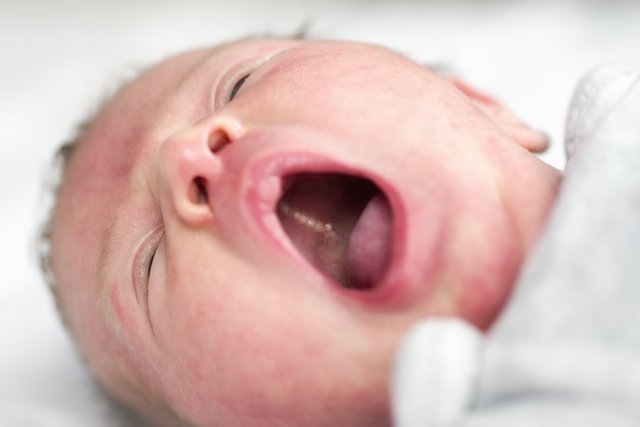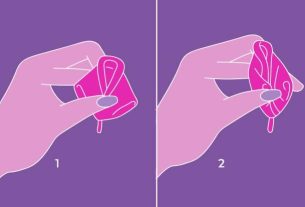Epstein pearls are small benign cysts containing keratin that usually appear on the palate or gums of the newborn, and are identified through symptoms such as yellowish-white balls, which do not cause pain.
The emergence of Epstein’s pearls occurs near the end of the fourth month of pregnancy, which is when the fusion of the bones that form the baby’s palate is complete, resulting in the emergence of cysts that have an appearance similar to teeth that are about to emerge.
Because it is a benign condition and usually disappears spontaneously before the end of the third month of life, Epstein pearls do not usually require any type of treatment. However, it is important that they are evaluated by a neonatologist or pediatrician during control consultations.

Epstein Pearl Symptoms
The main symptoms of Epstein pearls are:
- Yellowish-white balls on the gums or on the middle palate (roof of the mouth) mainly in the posterior region;
- Small cysts, similar in appearance to teeth that are about to emerge;
- Sizes ranging from 1 to 4 mm in diameter;
- Smooth, firm lumps or cysts that do not cause pain.
Epstein’s pearls usually appear together in groups of 2 to 6 cysts, but they can also occur singly.
How the diagnosis is made
The diagnosis of Epstein’s pearls is made by a neonatologist shortly after birth or by a pediatrician during routine consultations through direct observation of the characteristics of the lesions.
This diagnosis is clinical, and it is not necessary to perform any type of additional imaging or laboratory examination.
Make an appointment with a pediatrician in the nearest region:
Taking care of your health has never been easier!
Possible causes
Epstein’s pearls arise due to the entrapment of the palatal epithelium, which is the mucosa that covers the palate (roof of the mouth), approximately at the end of the fourth month of pregnancy, when the bones that form the palate fuse.
On the other hand, Epstein pearls appear to be more common in full-term babies compared to premature babies and those born very heavy.
Additionally, Epstein pearls are also seen more frequently in babies of women who have had multiple pregnancies.
How the treatment is carried out
Generally, no treatment is needed for Epstein pearls, as they disappear spontaneously within a few weeks or months after birth, usually before the end of the third month of life.
Furthermore, when the baby is breastfed, uses a pacifier or bottle, there is friction in the mouth that helps to break down and eliminate Epstein’s pearls more quickly. See how your baby should be fed.
It is important not to try to break Epstein’s pearls, to avoid possible infections, and to have regular consultations with the pediatrician or neonatologist to assess the correct growth and development of the newborn.

Sign up for our newsletter and stay up to date with exclusive news
that can transform your routine!
Warning: Undefined array key "title" in /home/storelat/public_html/wp-content/plugins/link-whisper-premium/templates/frontend/related-posts.php on line 12
Warning: Undefined array key "title_tag" in /home/storelat/public_html/wp-content/plugins/link-whisper-premium/templates/frontend/related-posts.php on line 13



